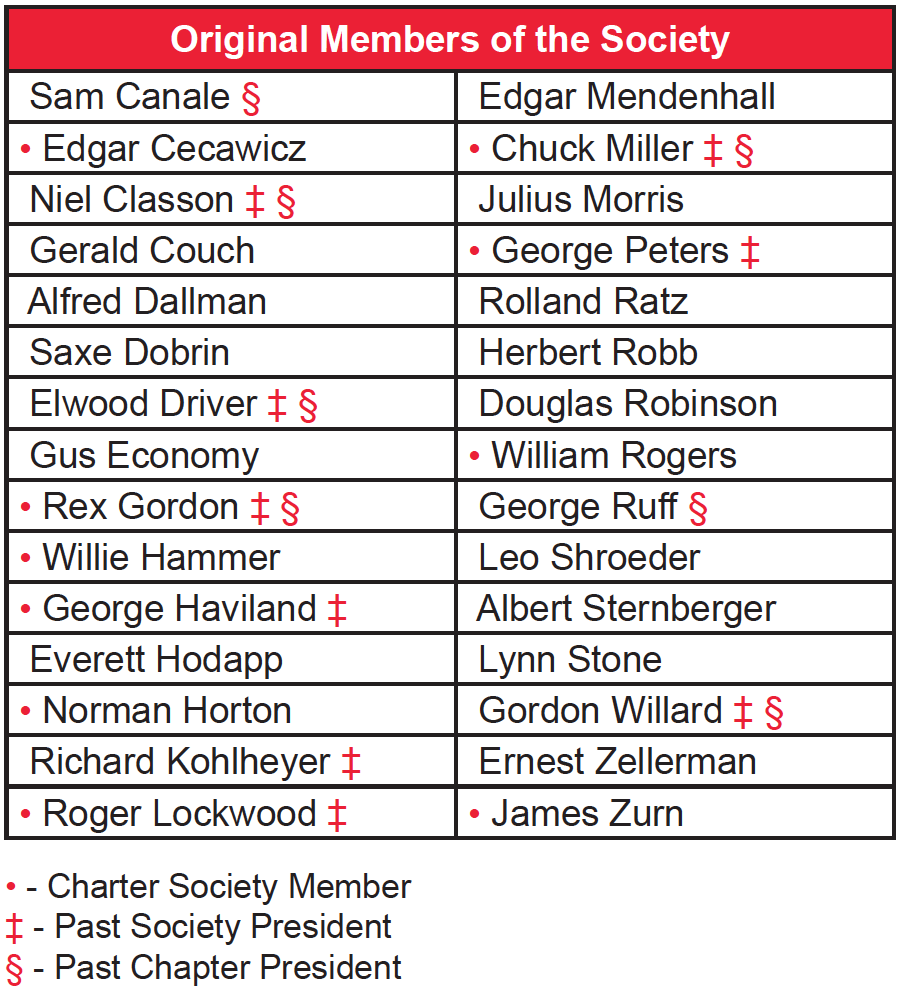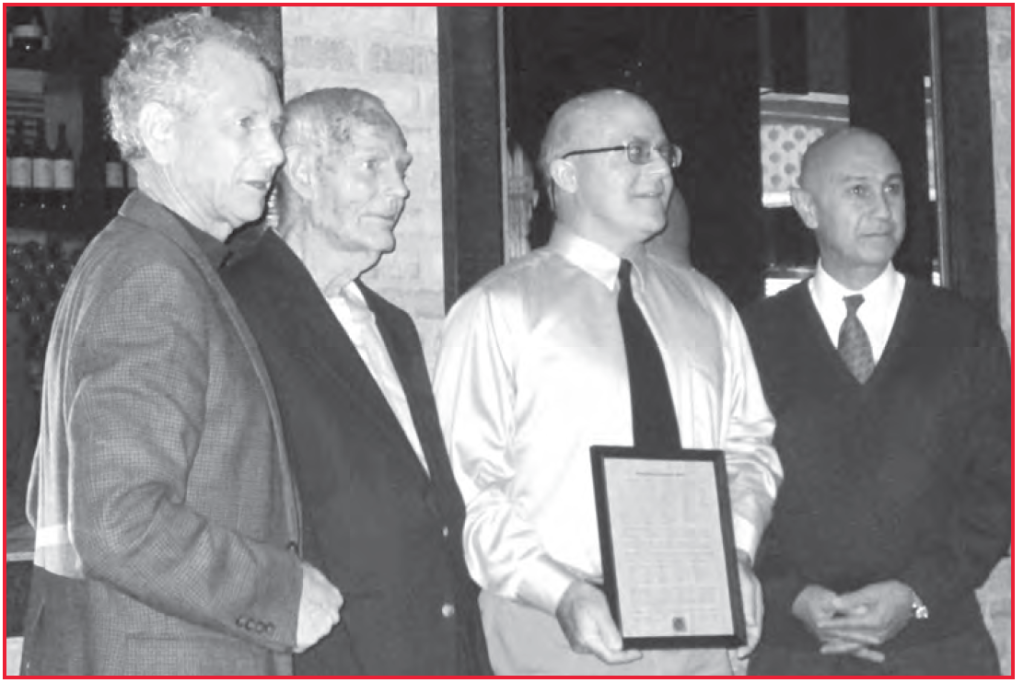The proceeding is from Journal of System Safety, Spring / Summer 2014 (Vol 50 No 2) by ISSS Historian Rex B. Gordon. The full JSS Archives are being processed and uploaded.
Historical Note No. 1: The Founding of the Society
The event recognized as the founding of the Society occurred on December 4, 1963 in the main lecture hall at the School of Aviation Safety on the University of Southern California campus in Los Angeles. The gathering consisted of about 40 individuals, including many students and others from the USAF Aerospace Safety Center, some USC faculty members, along with system safety representatives of the numerous aerospace companies located in the area.
They had been invited by current technical lead of the USC Aviation Safety School, C.O. (Chuck) Miller. He presented the current scope and purposes of the USC program, which had been contracted by the Air Force. It was designed for those currently in, or being assigned to, aerospace project safety positions, and was intended to better equip them to manage the implementation of the system safety engineering requirement of recently released MIL-S-38130 (now known as MIL-STD-882), stipulating implementation of system safety programs on Air Force aerospace/ missile programs.
Following Miller’s presentation, Roger Lockwood, a member of the school’s faculty, advised the gathering that he had obtained a state of California charter for a technical, non-profit organization to be known as the “Aerospace System Safety Society.” With himself named as president, he invited any of those present who wished to pay a $2 member fee to become members. Lockwood maintained detailed records of those paying the initial and subsequent dues, thus identifying those 10 who both signed the charter member roll and paid the $2, and can be rightfully recognized as “Charter members of the Society.” Within several months, a total of 30 members had paid their dues, (which had been quickly raised to $5 per year by a vote of the Charter members). These 30 initial members noted here include 10 Charter members, nine past Society presidents and seven past chapter chairmen/ presidents. As will be addressed in subsequent notes, the name of the Society has progressed from the Aerospace System Safety Society (ASSS) to the System Safety Society (SSS) to, currently, the International System Safety Society (ISSS). These name changes offers an illustration of the expanding scope of the practice of system safety — from its aerospace origins in Los Angeles to a multitude of world-wide applications.

The System Safety Concept – OriginsFor almost any system, product or service, the most effective means of limiting product liability and accident risk is to implement an organized system safety function beginning in the conceptual design phase and continuing through to its development, fabrication, testing, production, use and ultimate disposal.While it can be argued that ancient and common laws, making the builder responsible for harm caused by faulty products, form the original basis of the SSC, addressed here in these notes is the direct antecedent of the current practice of system safety. The initial formal documentations of what is generally recognized as the SSC are traditionally traced back to a technical paper presented by a Boeing engineering manager, Amos L. Wood, at the January, 1946 annual meeting of the Institute of Aeronautical Sciences (ISA) in New York. This paper addressed the importance of a manufacturer’s organizational structure to incorporate a focus on safety from design through post-accident analysis. It was titled “The Organization of an Aircraft Manufacturer’s Air Safety Program.” Some eight months later, in September 1946, a technical paper presented by William Stieglitz, an aeronautical engineer, at a special ISA meeting provided additional far-sighted views on the SSC. These included the following quotations: “Safety must be designed and built into airplanes, just as are performance, stability, and structural integrity.” “Safety is a specialized subject just as are aerodynamics and structures.” “A safety group must be just as important a part of a manufacturer’s organization as a stress, aerodynamics, or a weights group…” Thus, we can see that while at least in the aviation industry, key elements of the SSC were being formally discussed by forward-thinking leaders as early as 1946, there was as yet little detectable change in the majority of traditional technical methods. |
On December 7, 2013, in commemoration of the 50th anniversary of the Charter meeting of the Society, the Southern California Chapter presented a plaque to the current director of USC aviation safety programs, to be hung in the school’s lobby. This presentation occurred during a Chapter luncheon held in Los Angeles. This “Declaration of Appreciation” identifies five key individuals who uniquely contributed the necessary elements leading to the Charter meeting of the Society. Subsequent “notes” will expand on the roles of these and other system safety pioneers, along with the necessary elements leading to the formation of the Society.
The honored guests at this 50th commemoration celebration were Founder and initial President Roger Lockwood and fellow Charter Member Rex Gordon. Joining Chapter President Francis McDougall and other Chapter members was Thomas Anthony, aviation safety program director and other USC faculty. The meeting culminated in the presentation of the Certificate of Appreciation by Francis McDougall and Roger Lockwood to USC’s Tom Anthony and Dr. Najm Meshkati.

Presentation of certificate of appreciation commemorating the 50th anniversary
of the Charter Meeting of the Society. From left: Tom Anthony, Roger Lockwood,
Francis McDougall, and Dr. Najm Meshkati
Comments on the accuracy of these notes on the History of the Society should be addressed to Rex Gordon at [email protected].

[…] From the Archives: Notes on Society History Related post about the founding of the society […]